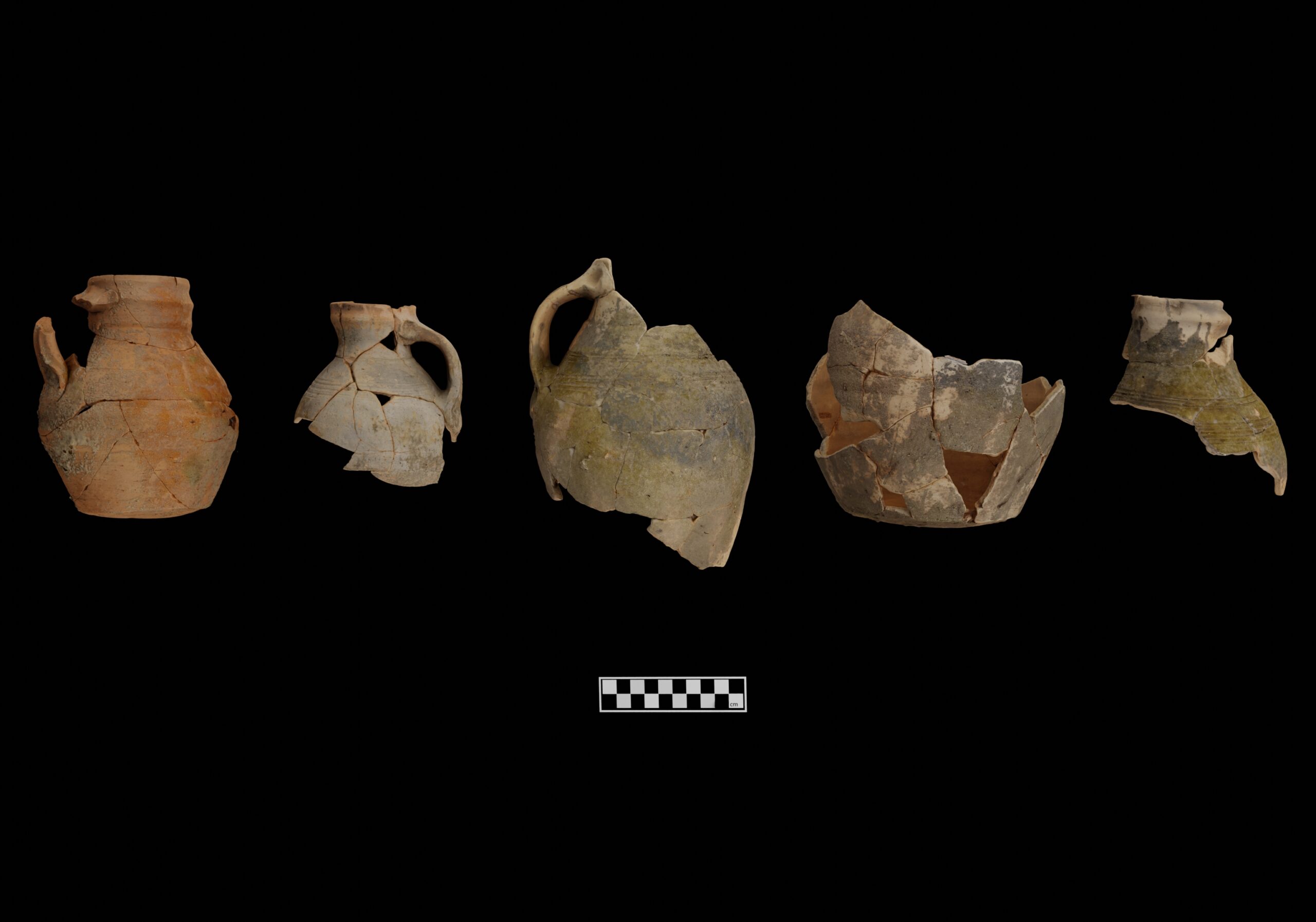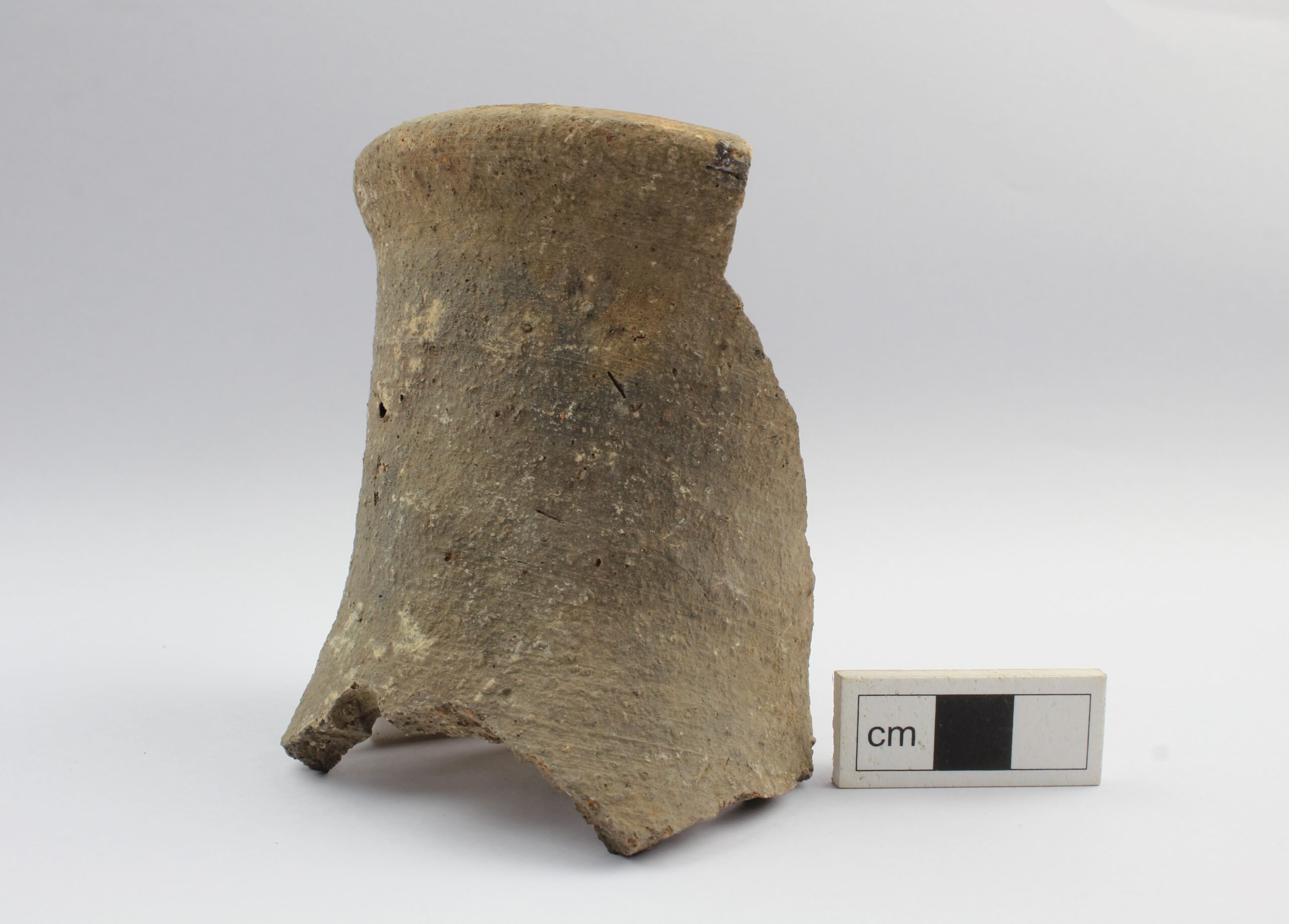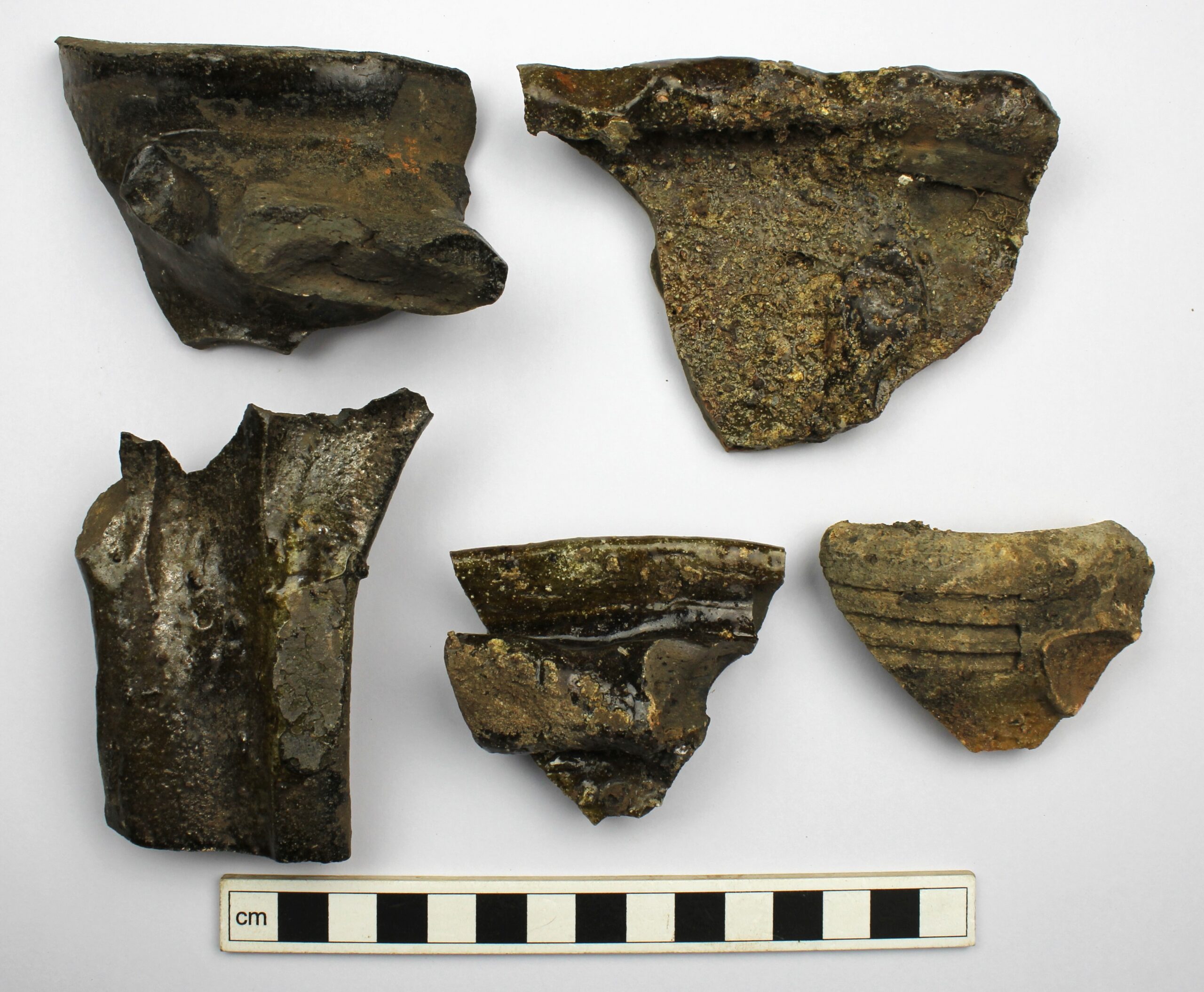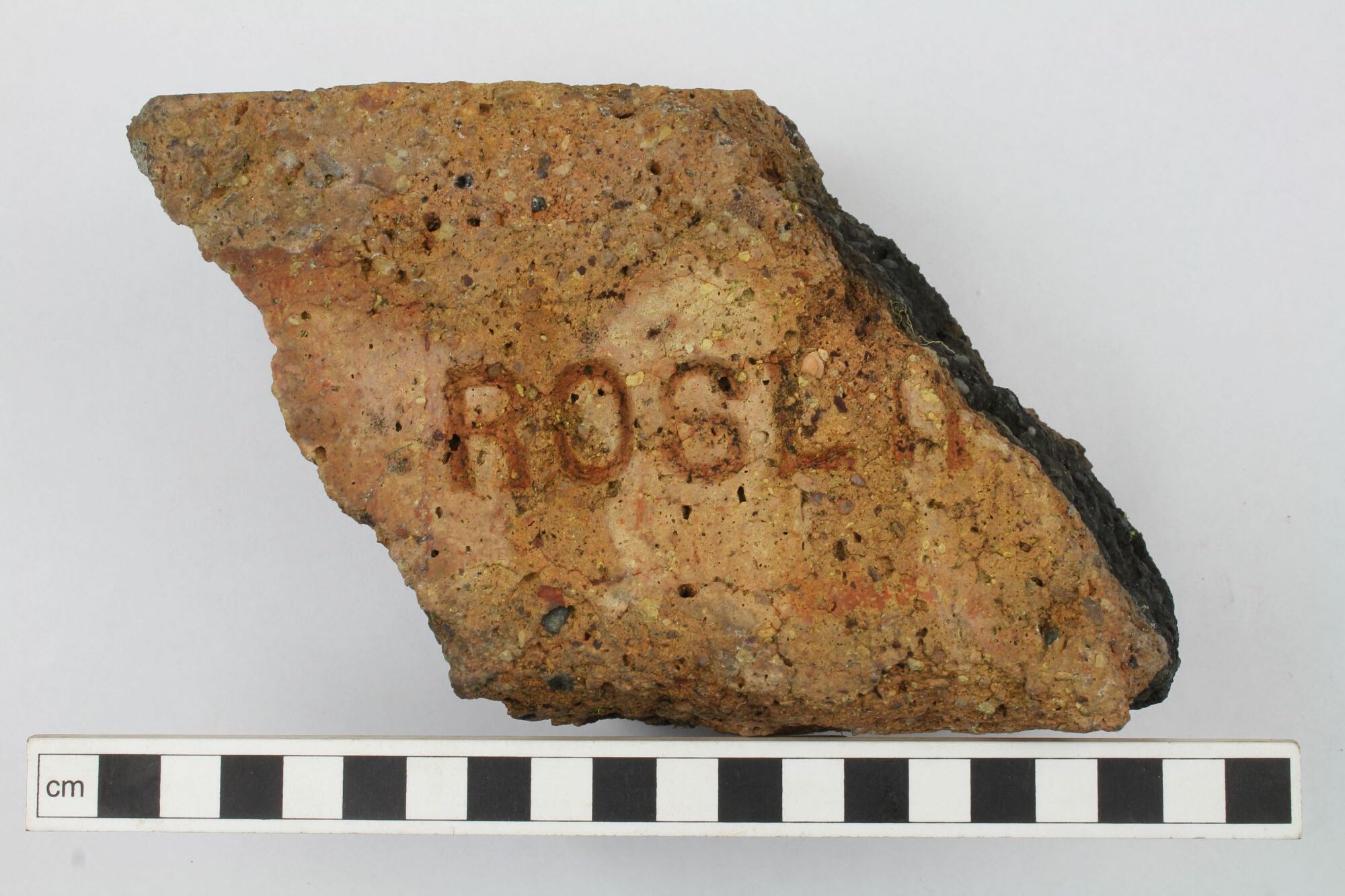Two medieval pottery kilns were uncovered at Roslin, Midlothian, during recent development works. The kilns were associated with large deposits of ceramic material, including kiln props, wasters, and sherds from the Scottish White Gritty Wares and Medieval Redwares that were being produced here during the 14th and 15th centuries.
The archaeological excavation was carried out in 2020 and was funded by BDW Trading Ltd, Cala Management Ltd & University Court of the University of Edinburgh.
The Barony of Roslin and the St. Claire Family
The kilns were located in the former Barony of Roslin, 11km south of Edinburgh, which was held by the St. Claire (Sinclair) family since the 11th century. The St. Claire’s are famously associated with the nationally important sites of Rosslyn Chapel and Rosslyn Castle which lie less than a kilometre away from the site. Interestingly, a further medieval kiln site was also revealed on St Claire owned lands at Stenhousemuir, Falkirk, suggesting that ceramic production was an important commercial concern to this family.
Background map: Ordnance Survey First Edition (6-inch) map, Edinburghshire Sheet 12, surveyed in 1852 and published in 1854. Reproduced with the permission of the National Library of Scotland. View the full map here.
header image: © Colin Park
The Kilns
The two kilns were constructed on a flat, sheltered area between a bank and a small watercourse. Both survived as only fragmentary features, possibly due in part to the robbing of stone from the structures after their abandonment. Kiln A survived as a keyhole-shaped pit formed by the kiln bowl with a base of stone slabs and a single flue channel. Kiln B comprised a central shallow bowl with two opposing flue or stokehole channels. Two set stones at the junction of the flue and bowl were likely props for the kiln chamber.
Radiocarbon dates from the two kilns indicate that they were in use during the 14th or 15th centuries AD, placing them in the medieval period. Kiln B was in use significantly earlier than Kiln A, with dates of between 1305 – 1420 CalAD. In contrast, material from Kiln A produced dates of 1423 – 1485 CalAD.
The large deposits of medieval pottery associated with the kilns indicate that they were used for firing ceramics. The lack of internal structural elements makes it difficult to define exactly how the kilns functioned, but it was likely that the ceramic vessels were stacked around a central fire using kiln props and parting sherds to keep the vessels separate during firing. The image below shows an artistic reconstruction of Kiln B with its two opposing flues.
The Pottery
Over four and a half thousand sherds of pottery were found at Roslin represented by two main types: Scottish White Gritty Ware and Scottish Medieval Redware. It is unclear if both were produced at the same time or if Redware gradually replaced White Gritty Ware as the clay source was depleted. The assemblage was dominated by plain, handled jugs with a variety of globular or ovoid bodies and green, lead-based glaze. Fragments of other vessels, such as jars and bowls were also present. Evidence of decoration is rare, suggesting that the jugs were quickly made and mass-produced, probably for the domestic market.
explore the 3D model⚬
explore the 3D model⚬
explore the 3D model⚬
explore the 3D model⚬
explore the 3D model⚬
Other Ceramics
A range of other ceramic artefacts were found within the deposits around the kilns including wasters, parting sherds, and kiln props. Wasters are fragments of vessels that were discarded soon after production, usually due to a flaw or damage such as cracks or scorch marks. Wasters were sometimes also used as parting sherds, sherds used to separate new vessels from each other within the kiln during firing. Kiln props were cylindrical artefacts used to raise and stack the pottery above the area of heat.
ICP Analysis
ICP (Inductively Coupled Plasma) analysis is a scientific technique used to classify the inorganic chemical composition of clays used in pottery. Samples from the Roslin kilns were analysed by Torbjörn Brorsson in Sweden, which proved that two distinct clays were exploited to produce the White Gritty Wares and Redwares. Despite their differences, both clays were still chemically similar, suggesting that both were probably local to the site. The exact source of the clay is unknown—it may have been exhausted or subsumed beneath later settlement—but it is interesting to note that the later nearby brickworks (1930s to 1977) also made use of the same clay source.



















